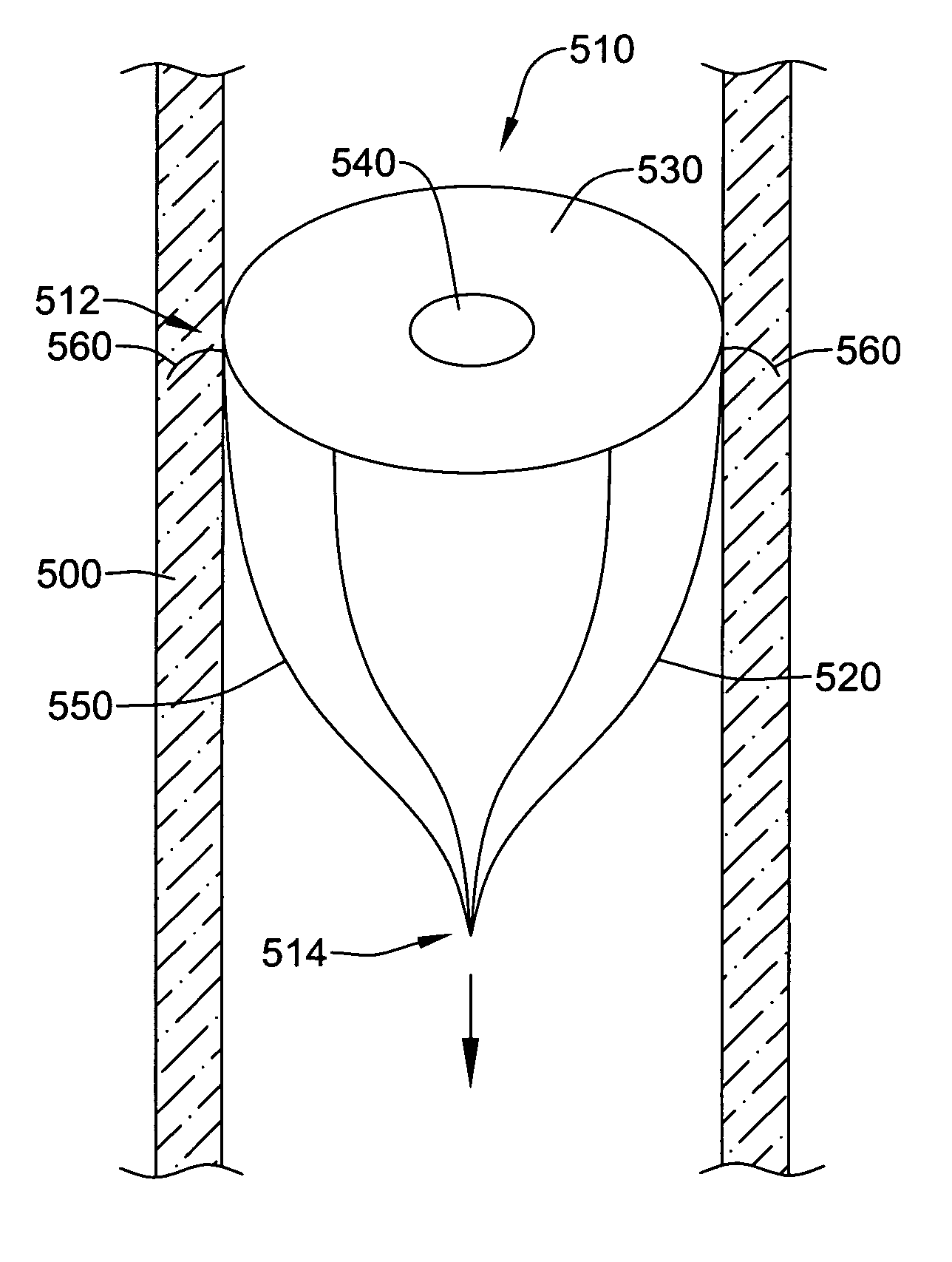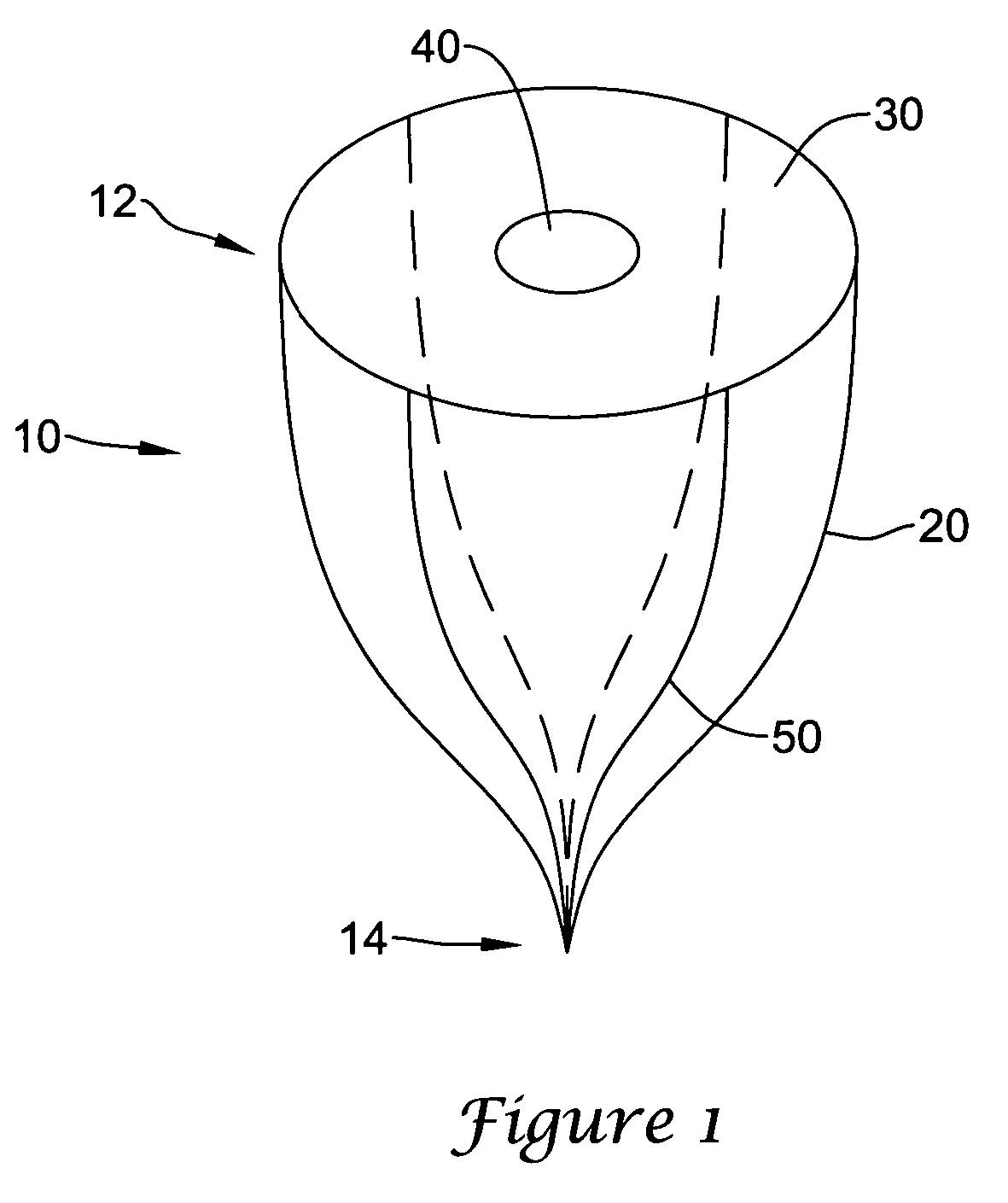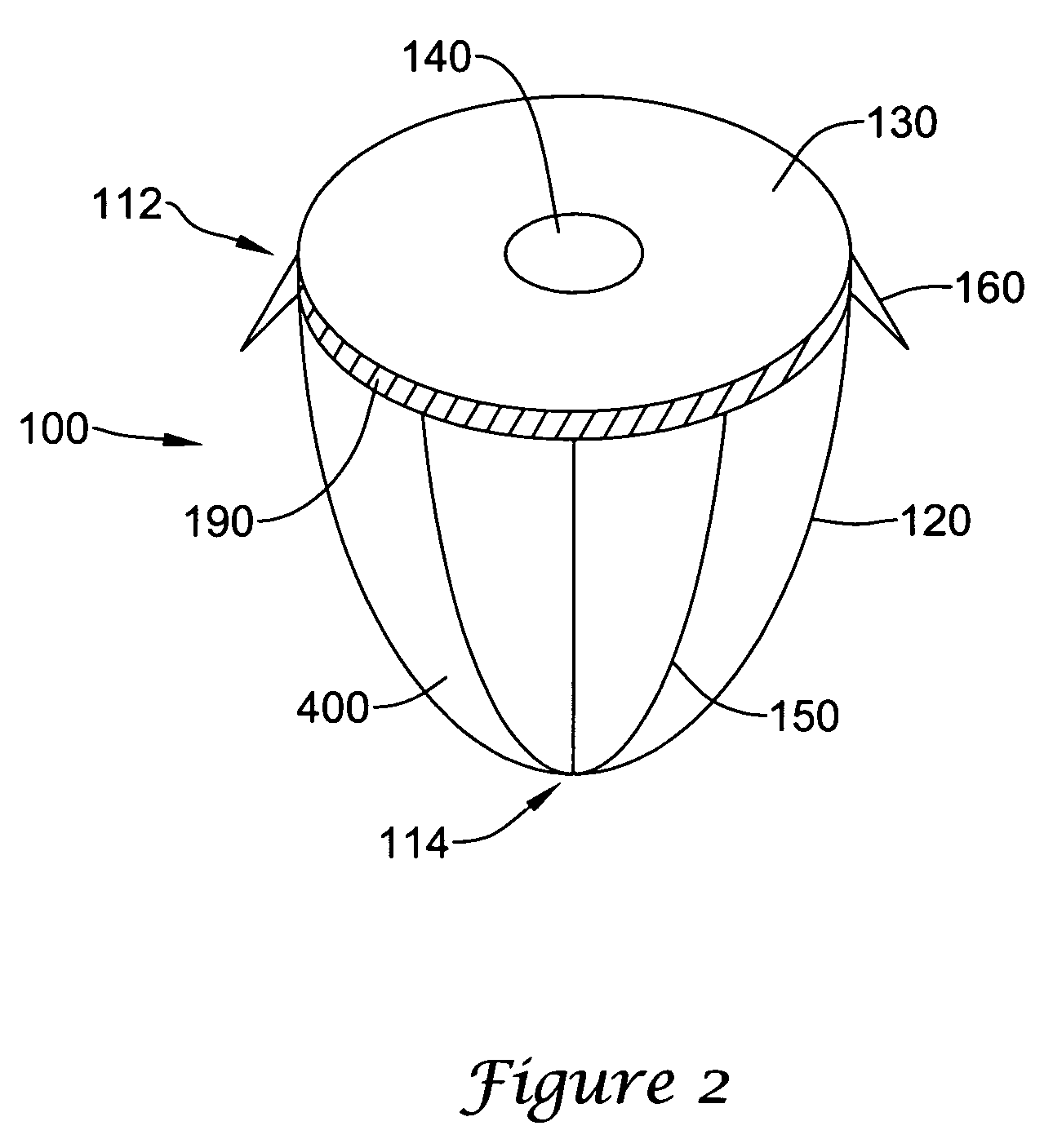Diversion device to increase cerebral blood flow
a technology of cerebral blood flow and diversion device, which is applied in the field of diversion device to increase cerebral blood flow, can solve the problems of constant monitoring requirements, balloons are always susceptible to failure, and mechanical complexity, and achieve the effect of increasing cerebral perfusion
- Summary
- Abstract
- Description
- Claims
- Application Information
AI Technical Summary
Benefits of technology
Problems solved by technology
Method used
Image
Examples
Embodiment Construction
The filter devices disclosed herein are characterized by their ability to withstand high arterial blood flow rates for an extended time and their ability to expand and contract with the wall of the aorta. In some embodiments, the devices are made of a material that is impermeable to blood such as TEFLON (polytetrafluoroethylene) or nitinol. The devices can have an anti-thrombogenic coating, such as heparin or Carmeda®. BioActive Surface (Carmeda Inc., U.S.). In other embodiments, the devices are made of a material that is permeable to blood, such as a mesh, woven material, or a thin polymer. All or a part of the device can be made of a biodegradable material. The device is collapsible and expandable and can be delivered surgically, endoscopically, or percutaneously with cannulas or intravascular catheters. In one embodiment, the device is introduced through the femoral artery. In another embodiment, the device is introduced through the brachial artery.
The device can be left in the a...
PUM
 Login to View More
Login to View More Abstract
Description
Claims
Application Information
 Login to View More
Login to View More - R&D
- Intellectual Property
- Life Sciences
- Materials
- Tech Scout
- Unparalleled Data Quality
- Higher Quality Content
- 60% Fewer Hallucinations
Browse by: Latest US Patents, China's latest patents, Technical Efficacy Thesaurus, Application Domain, Technology Topic, Popular Technical Reports.
© 2025 PatSnap. All rights reserved.Legal|Privacy policy|Modern Slavery Act Transparency Statement|Sitemap|About US| Contact US: help@patsnap.com



